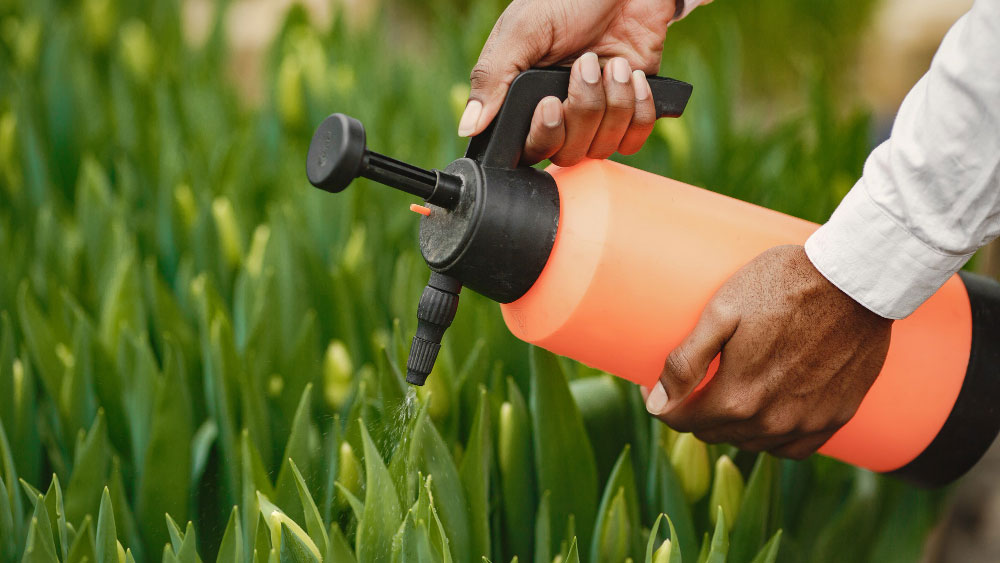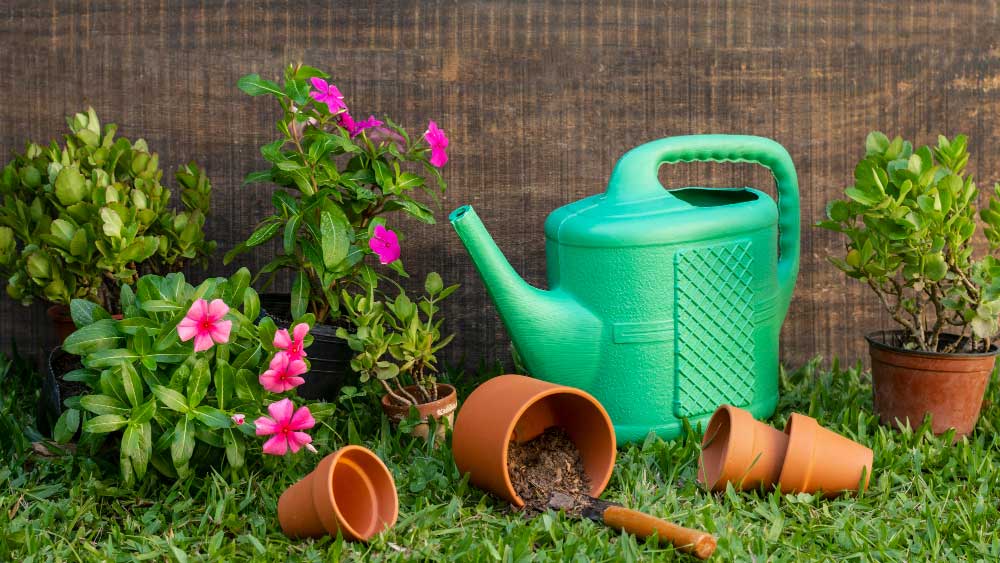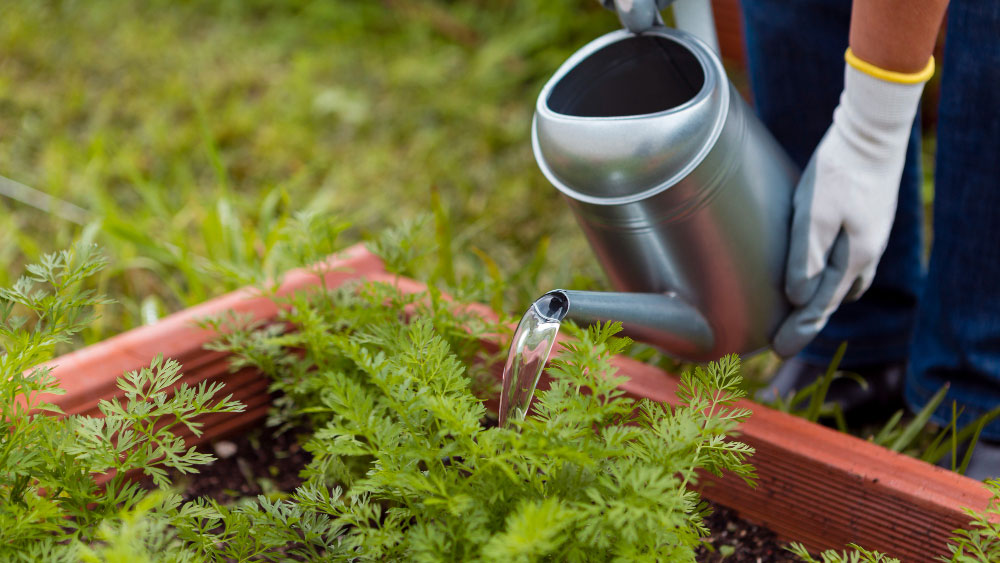Liquid Fertilizer For Lawns: A Guide For Easy Lawn Care
Knowing about liquid fertilizers is essential to achieve the greenest and healthiest lawns. Fertilizers are like a power drink for your lawn. They are easy to use and work fast to make your grass look healthy.
Liquid fertilizer soaks into the ground and reaches the grassroots, quickly boosting your lawn
Before choosing which fertilizer to use, there are some considerations to take into account. Excessive amounts can damage your grass. Seasonal applications and ratio of nutrients are also essential, as well as the best time of day to apply.
In this blog, we’ll look further into how to use liquid fertilizer for successful lawn care. We’ll cover what it is, why it’s so essential, and some tips on correct usage.

Pros & Cons Of Liquid Fertilizer
Selecting the correct type of fertilizer can make all the difference for lawn care. Liquid fertilizers are popular, but like anything else, they have upsides and downsides. Let’s look further into what makes liquid fertilizer for lawns a great option and what to watch out for.
Pros
- Selecting the correct type of fertilizer can make all the difference for lawn care. Liquid fertilizers are popular, but like anything else, they have upsides and downsides. Let’s look further into what makes liquid fertilizer for lawns a great option and what to watch out for.
- Pros of Liquid Fertilizer
- Quick Absorption: Liquid fertilizers are known for their fast action. The grassroots quickly absorb, leading to rapid green-up and growth. Liquid fertilizer is a good choice if your lawn looks dull and needs an instant pick-me-up.
- Easy Application: Spraying liquid fertilizer is straightforward. You can use a hose-end or backpack sprayer, making the application even and effortless. It’s like watering your lawn but with added nutrients.
- Uniform Coverage: One of the best things about liquid fertilizers is their uniform coverage. Unlike granular options, you don’t have to worry about uneven patches or missed spots. Every blade of grass gets its share of nutrition.
- Versatility: Liquid fertilizers can be mixed with lawn treatments like weed control, saving time and effort. It’s like multitasking for your lawn care routine.
- Adjustable Concentrations: You have more control over the concentration of nutrients. You can adjust the fertilizer’s strength depending on your lawn’s needs, which is excellent for customized lawn care.
Cons
- Frequent Applications: While liquid fertilizers act fast, they also have a shorter lifespan in the soil, meaning you might need to reapply more often than slow-release granular fertilizers.
- Risk of Overapplication: It’s easy to overdo it with liquid fertilizers. Accidental overapplication can lead to nutrient burn, harming your lawn.
- Cost Over Time: Although liquid fertilizers might not seem expensive upfront, the frequent applications can add up, making it a costlier option in the long run.
- Storage and Shelf Life: Liquid fertilizers must be stored properly to maintain efficacy. They can degrade or lose potency if not stored in the right conditions.
- Environmental Concerns: Runoff from liquid fertilizers can be an environmental concern. These fertilizers can leach into waterways if not applied correctly, causing pollution.

What to Consider While Choosing the Liquid Lawn Fertilizer
Choosing the best liquid lawn fertilizer for your yard can feel like navigating through a maze. But with a clearer understanding, you can pick the perfect fertilizer to keep your lawn lush and healthy. Here’s what you need to consider:
Understanding Your Lawn’s Soil pH
Begin by knowing your soil’s pH. It may seem complicated, but it’s pretty straightforward. Your lawn’s soil pH can affect how well your lawn grass can access the nutrients in the fertilizer. Most grass types prefer a slightly acidic pH (6.0 to 7.0).
You can purchase soil testing kits from any local garden center or online. Based on the results, you can choose a fertilizer that will enhance and work in harmony with your soil’s pH.
NPK Ratio: The Nutrient Balancing Act
NPK ratio stands for Nitrogen (N), Phosphorus (P), and Potassium (K). These are the three essential nutrients your lawn needs.
- Nitrogen is for leaf growth and gives that lush green color.
- Phosphorus supports root development.
- Potassium boosts overall health and disease resistance.
The proper NPK ratio depends on your lawn’s specific needs. For example, if you want to boost growth and greenness, use a fertilizer with a higher nitrogen content.
Organic vs. Synthetic: The Great Debate
The organic versus synthetic debate is significant in the lawn care world. Organic fertilizers are made with natural and organic materials like fish emulsion or seaweed. They improve soil health over time and are environmentally friendly. However, they work slower than synthetic ones.
Synthetic fertilizers, on the other hand, are like a tonic for your lawn. They act quickly and are easy to apply but can be harsh on the environment and not improve soil structure.
Your choice here depends on your lawn care philosophy and how quickly you want to see results.
Frequency of Applications: Timing is Everything
How often should you use liquid fertilizer? Well, it depends on the product, your lawn’s needs and the time of year.
Generally, liquid fertilizers must be applied every 2-4 weeks during the growing season. But always read the label because every product is a little different. Over-fertilizing can harm your lawn, so stick to the recommended frequency.

How To Chose the Best Liquid Lawn Fertilizers
Choosing the best liquid lawn fertilizer is crucial for maintaining a healthy, vibrant lawn. It’s not just about picking any fertilizer; it’s about selecting the right one for your lawn needs.
Assess Your Lawn’s Needs
Start by evaluating your lawn. What type of grass do you have? Is your lawn primarily for aesthetics, or does it endure heavy foot traffic?
Different grass types and usage patterns may require different nutrient formulations. Also, consider the time of year and the growth stage of your lawn. Different seasons and growth phases call for different nutrient needs.
Understand Nutrient Formulations
Liquid lawn fertilizers come in various nutrient formulations, often indicated by an NPK ratio – Nitrogen (N), Phosphorus (P), and Potassium (K). Each element serves a specific purpose:
- Nitrogen: Promotes leaf growth and gives the lawn its green color. A formula containing a higher percentage of nitrogen is best applied early to mid-season.
- Phosphorus: Aids in root development. It is helpful for encouraging stronger growth during the growing season and for repairing damaged areas that have received heavy footfall.
- Potassium: Enhances the overall health of the grass. A higher ratio after a dry season is helpful as it aids roots in the uptake of water.
Check the manufacturer’s label and choose a fertilizer with a ratio that suits your lawn’s specific requirements.
Consider the Application Method
Liquid fertilizers are applied using sprayers. You can choose between hose-end sprayers attached directly to your garden hose or tank sprayers, where the fertilizer is mixed in a tank and then sprayed onto the lawn.
Consider which application method you’re most comfortable with and ensure your chosen fertilizer is compatible.
Look for Added Benefits
Some liquid fertilizers offer more than just essential nutrients. They might include soil conditioners, micronutrients, or even weed control substances. If your lawn has high soil acidity or weeds, look for fertilizers that address these issues and provide essential nutrition.
Read Reviews and Seek Recommendations
Check out reviews and seek recommendations from other lawn enthusiasts or professionals. Real-life experiences and customer feedback can provide valuable insights into the effectiveness of different fertilizers.
Eco-Friendly Options
With growing environmental concerns, it’s wise to consider the ecological impact of the fertilizer you choose. Opt for eco-friendly, safe options for the environment, pets, and children. These are often organic fertilizers, which can be equally effective and less harmful to the ecosystem.
Brand Reputation
Trustworthy brands with a history of producing quality lawn care products are generally a safer bet. Research the brand’s reputation and market share for quality and customer satisfaction.
Our research found Jack’s Classic All Purpose 20-20-20 fertilizer among the best choices.
Check Compatibility with Your Lawn Care Routine
If you have an established lawn care routine, make sure the fertilizer you choose fits into it seamlessly. For example, if you prefer to fertilize early in the morning, ensure the product you select is effective when applied.
Climate and Environmental Conditions
Consider the climate and environmental conditions in your area. Certain fertilizers are formulated to work better in specific climates and soil types.
How To Use Liquid Fertilizer
Using liquid fertilizer on your lawn can be a game-changer for achieving that lush, vibrant green everyone loves. But it’s not just about pouring it on and hoping for the best. There’s an art to using liquid fertilizer effectively.
Understanding Liquid Fertilizer
First, it’s important to know what liquid fertilizer is. It’s a concentrated liquid containing essential nutrients for your lawn’s growth. Unlike granular fertilizers, liquid versions are designed for easy absorption, ensuring your lawn gets fed quickly and efficiently.
Equipment You’ll Need
You can use a hose-end sprayer or a backpack sprayer for applying liquid fertilizer. The hose-end sprayer attaches to your garden hose and mixes the fertilizer with water as it sprays, while the backpack sprayer allows for more controlled, manual application.
Preparing the Fertilizer
Most liquid fertilizers need to be diluted with water. Follow the relevant instructions and warnings on the label carefully to get the right concentration.
Timing is Key
The best time to apply liquid fertilizer is during the growing season, usually in early spring and late summer or early fall. Avoid fertilizing during the heat of the day or when your lawn is stressed from drought.
Application Tips
- Even Coverage: Ensure you cover the entire lawn evenly. Overlapping your paths slightly can help avoid missing any spots.
- Avoid Over-application: Applying too much fertilizer can harm your lawn. Stick to the recommended rate on the product label.
- Water After Application: Watering your lawn lightly after applying the fertilizer helps to move the nutrients into the soil.
- Regular Maintenance: As directed by the product guidelines, consistent applications will yield the best results.

Safety First
Wear safety gloves and glasses when handling and applying fertilizer to protect yourself from splashes and spills.
Monitor Your Lawn
After application, keep an eye on your lawn. Look for signs of improvement, but also be aware of any adverse reactions, like yellowing or burning, which could indicate over-fertilization.
Handling Different Lawn Types
If you have a variety of grass types in your lawn, adjust how you use the fertilizer. Some grasses are more sensitive to certain nutrients than others.
Dealing with Pests and Diseases
While fertilizing, inspecting your lawn for signs of pests or diseases is an excellent opportunity. Healthy, well-fertilized lawns are more resistant to these issues, but early detection is key to preventing spread.
Storing Liquid Fertilizer
Store any leftover fertilizer in a cool, dry place, specifically away from direct sunlight and out of reach of children and pets.
Our most frequently asked questions on liquid fertilizer.
Is Liquid Fertilizer Good For Your Lawn?
Liquid fertilizers are a popular choice for lawn care because they are easy to apply and quickly absorbed by the grass. They can quickly boost nutrients to the lawn, promoting healthy growth and vibrant color. Liquid fertilizers are more customizable than granular fertilizers, allowing for more precise application rates and nutrient ratios.
However, following the recommended application rates and frequency is essential to avoid over-fertilizing, which can lead to nutrient burn and other issues. Choosing a high-quality liquid fertilizer that contains the necessary nutrients for your lawn type and soil conditions is also essential.
How Do I Choose A Fertilizer For My Lawn?
When choosing a fertilizer for your lawn, you need to consider the following factors:
- Grass Type: Different grass types have different nutrient requirements. For instance, cool-season grasses may need a different fertilizer than warm-season grasses. Consider your grass type when selecting a fertilizer.
- Nutrient Needs: Conduct a soil test to determine the specific nutrient needs of your lawn. This will help you choose a fertilizer with the suitable nitrogen, phosphorus, and potassium (N-P-K) balance for your soil.
- Fertilizer Type: Fertilizers come in granular, liquid, organic, and synthetic forms. Each type has its advantages. Granular fertilizers release nutrients slowly and are easy to apply, while the grass quickly absorbs liquid fertilizers. Consider the pros and cons of each type based on your lawn’s needs.
- Application Timing: Different fertilizers are recommended for different times of the year. For example, high-nitrogen fertilizers are suitable for spring, while potassium-rich fertilizers are recommended for fall. Consider the timing of your fertilizer applications based on the specific needs of your lawn throughout the year.
- Local Regulations: Be aware of local regulations regarding using certain fertilizers, especially those containing phosphorus. Some areas have restrictions on phosphorus use in lawn fertilizers.
When Will I Notice The Results After Applying Liquid Lawn Fertilizer?
After applying liquid lawn fertilizer, you can expect to notice results within a few weeks, as the fertilizer provides nutrients immediately to the grass.
Final Thoughts
Using liquid fertilizer isn’t tricky, but it does require some attention to detail. The right approach will ensure your lawn stays healthy and vibrant throughout the growing season. Remember, a little care goes a long way in lawn maintenance.